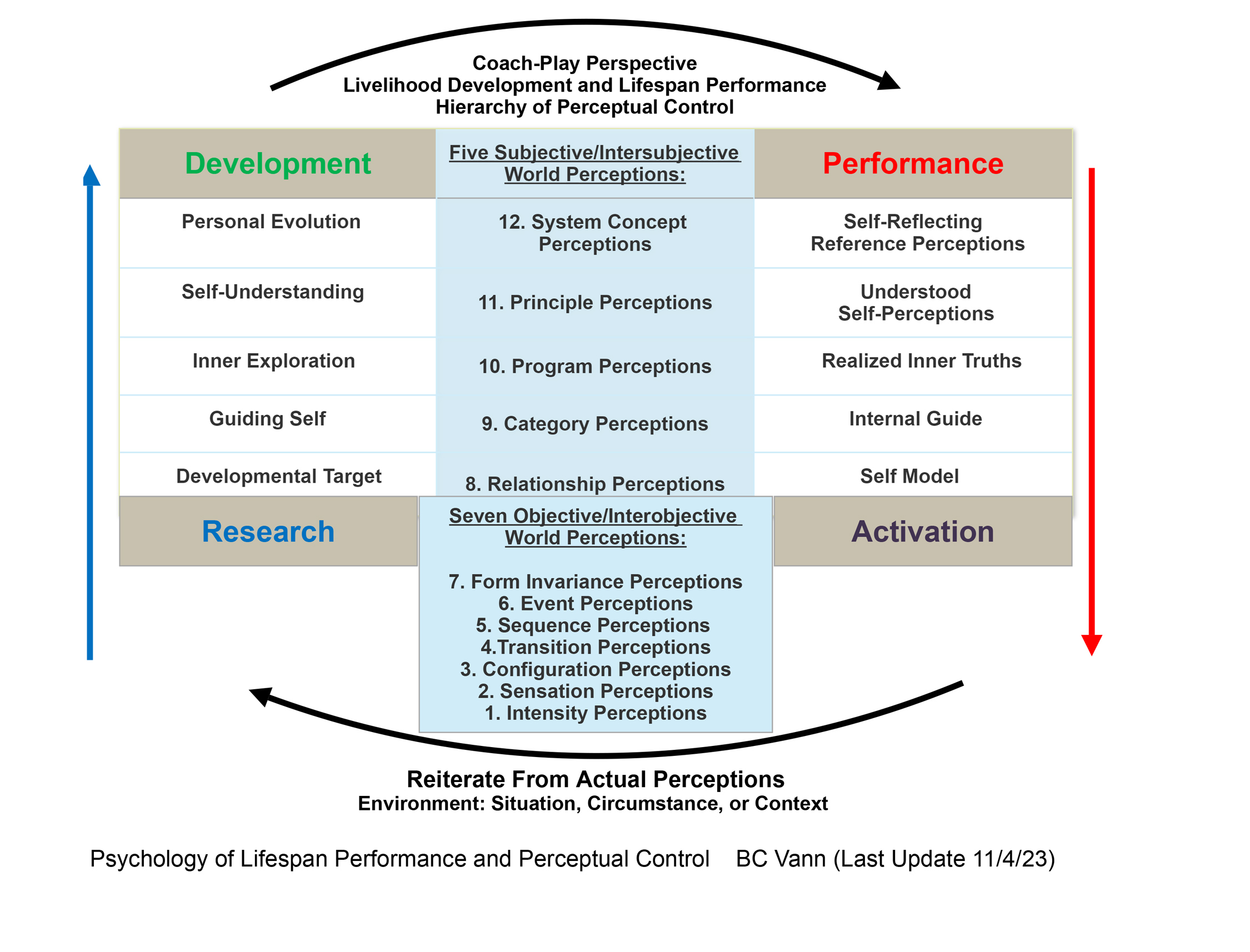As Your Resource For Self-Development
- The Optima Bowling Coach (2025)
Cognitive–Deliberate Practice
(Page Update 5/18/25)
The Cognitive–Deliberate Practice era was designated when researchers linked expert performance to carefully structured drills that reshape mental representations and strengthen neural circuits. Developmental theory framed learning as a feedback-rich cycle in which cognition directs action, action returns data, and the loop repeats at calibrated difficulty. Coaching adopted planning matrices, task deconstruction, and rapid feedback to accelerate skill acquisition without sacrificing accuracy.
Historical Setting
Three research streams converged. First, cognitive psychology replaced stimulus-response models with internal information processing. Allan Newell and Herbert Simon’s work on problem-solving (1972) portrayed expertise as organized “chunks” in long-term memory. Second, motor-learning studies—Schmidt’s schema theory (1975) and Adams’s closed-loop approach—showed that error detection and correction improve motor programs. Third, Albert Bandura’s social-cognitive theory (1977) emphasized self-efficacy: belief in capability influences persistence and attention.
The synthesis crystallized when K. Anders Ericsson and colleagues published the seminal violin-study findings (1993), proposing deliberate practice: activities explicitly designed to improve performance, requiring full attention, clear goals, immediate informative feedback, and frequent discomfort at the edge of current ability. Professional sports, music conservatories, and chess academies seized on the protocol. Technology-assisted: VHS playback allowed slow-motion review; heart-rate monitors provided physiological load data; early laptop spreadsheets tracked volume and intensity.
Education followed. Benjamin Bloom’s research on mastery learning (1984) recommended formative assessments and corrective drills until students reached the criterion. In corporate settings, competency models broke roles into behavioral indicators linked to training modules. Across contexts, improvement became a designed process rather than a hoped-for consequence.
Coaching Expression
Four operating principles define Cognitive–Deliberate Practice coaching:
- Goal Decomposition with Progressive Difficulty: Coaches charted long-term objectives, then broke them into sub-skills sequenced by complexity. Athletes progressed from stationary footwork to variable-speed patterns; musicians from isolated fingering to full-tempo passages. Each drill targeted a single performance dimension, minimizing confounding variables.
- High-Frequency, High-Quality Feedback: Immediate corrective cues followed every repetition. Video replay, digital metronomes, and laser timing gates narrowed feedback latency. Coaches highlighted specific errors (“shoulder opens early at frame 3”) rather than holistic praise or blame.
- Work-Rest Ratio Management: Sessions balanced concentrated effort with brief recovery to prevent plateau or injury. Periodization schemes (macrocycle, mesocycle, microcycle) allocated intensity across months, weeks, and days, ensuring incremental overload without burnout.
- Self-Monitoring and Mental Rehearsal: Learners recorded session metrics, reflected on strategy, and rehearsed sequences mentally. Imagery scripts engage visual, kinesthetic, and auditory channels, reinforcing neural patterns between physical practices.

Development as Nested Perceptual Control
Cognitive–Deliberate Practice — PCT Lens: Coaches controlled error rate through structured drills; reference values derived from performance benchmarks and progressively adjusted workload tables
Plane Balance
The era realigned the material-sensory and symbolic-causal planes. Precise movement execution remained essential, but symbolic planning—goal graphs, error taxonomies—drove session design. Relational-emotional factors appeared as motivational self-talk and coach communication style, yet often served the instrumental goal of sustaining attention rather than exploring feeling for its own sake.
PIE Integration Note
Purpose centered on clearly articulated performance targets, translated into measurable milestones. Integrity depended on data accuracy: split times, error counts, and workload logs. Experience consisted of repeated drills at the edge of competence, moderated to maintain engagement. The triad approached equilibrium, though narrower values emphasis left existential purpose underexplored.
Carry-Forward Legacy
- Evidence-Based Progression Modern high-performance programs still rely on periodization, key performance indicators (KPIs), and deliberate drill design.
- Feedback Technologies High-speed cameras, inertial sensors, and real-time analytics expand the principle of immediate informative feedback.
- Self-Regulated Learning Goal-setting and reflective practice routines underpin academic self-monitoring apps and athletic journaling platforms.
Limitations remain: focused repetition can generate overuse injuries, mental fatigue, and tunnel vision on local metrics. Later systemic approaches caution that drilling without context may neglect adaptability and collaborative dynamics.
Reflection Prompt
List one skill target you are pursuing. Break it into three sub-skills arranged by ascending difficulty. Schedule two deliberate practice blocks this week: 15 minutes, full concentration, and immediate feedback. Afterward, record one metric (error count, speed, or quality rating) and one qualitative note on focus level. Compare across sessions.
See Next: Vertical & Systemic Coaching
Back To: Humanistic Revolt